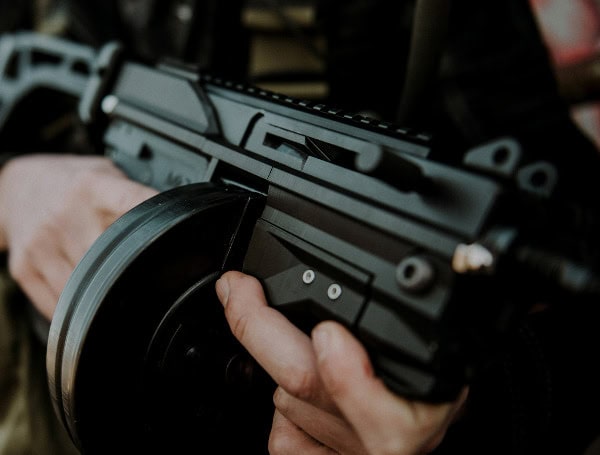The United States Supreme Court will be taking up the legal battle surrounding the regulation of ghost guns on Monday.
These firearms, which lack serial numbers, have been a cause for concern due to their increasing prevalence in crime scenes.
The Biden administration has been pushing for stricter regulations on ghost guns, considering them a significant threat to public safety.
Understanding Ghost Guns
Ghost guns are firearms that are assembled from kits available online, allowing individuals to build their own weapons at home. These guns do not carry serial numbers, making them untraceable by law enforcement agencies.
The rise in popularity of ghost guns has raised concerns about their potential misuse in criminal activities. The Biden administration has argued that regulating ghost guns is essential to prevent their easy accessibility and to ensure public safety.
Read: Gun Groups Sound Alarm About New DOJ ‘Red Flag’ Law Center
The Biden Administration’s Efforts
The federal Bureau of Alcohol, Tobacco, Firearms, and Explosives (ATF) issued regulations in 2022 to address the increasing availability of ghost guns. These regulations aimed to classify unfinished gun parts, such as frames or receivers, as firearms.
This classification would subject ghost guns to the same regulations as commercially available firearms, including licensing, background checks, and serial number requirements. The Biden administration believes that these measures are necessary to curb the proliferation of ghost guns and enhance law enforcement’s ability to trace them.
Legal Challenges and Lower Court Rulings
The Biden administration’s regulations faced legal challenges, leading to lower court rulings that struck down the regulations. U.S. District Judge Reed O’Connor in Texas ruled against the regulations, stating that they exceeded the ATF’s authority and did not align with the existing federal law’s definition of a firearm.
However, subsequent appeals by the Biden administration allowed the regulations to remain in effect while the legal battle continued.
The Supreme Court’s Intervention
The Supreme Court’s recent decision to take up the Biden administration’s appeal on ghost gun regulations marks a significant turning point in this legal battle.
The Court’s intervention came in the form of a 5-4 vote to keep the regulations in effect during the appeals process. Chief Justice John Roberts and Justice Amy Coney Barrett joined the three liberal justices in the majority, while Justices Alito, Gorsuch, Kavanaugh, and Thomas expressed their disagreement.
Implications for Firearm Regulation
The Supreme Court’s decision to review the ghost gun regulations will have far-reaching implications for firearm regulation in the United States.
The Court’s conservative majority has generally favored gun rights in previous cases, including recognizing the right to bear arms outside the home.
Read: Florida Rep. Matt Gaetz: Funding For Ukraine Is More Than U.S. Spends On Marine Corps
However, the ghost guns case presents a different legal question focused on the ATF’s regulatory authority rather than the right to bear arms. The Court’s ruling will determine the extent to which the ATF can regulate ghost guns and may shape future firearms regulations.
Public Safety Concerns
One of the key arguments put forth by the Biden administration is the significant threat that unregulated ghost guns pose to public safety. These firearms, lacking serial numbers and background checks, can be easily acquired by individuals without any record or accountability.
Law enforcement agencies have reported a surge in the use of ghost guns in criminal activities, as they provide a means to evade detection and hinder investigations. The Supreme Court’s decision will play a crucial role in addressing these public safety concerns.
Opposition and Legal Arguments
Opponents of the ghost gun regulations argue that the ATF has overstepped its authority and that the definition of a firearm under federal law does not cover all the parts of a gun.
They believe that any expansion of firearm regulation should be authorized by Congress rather than implemented through agency action.
These opponents contend that the Biden administration’s regulations infringe upon the rights of law-abiding citizens to build their own firearms without unnecessary government interference.
The Role of Congress in Firearm Regulation
The debate over ghost guns highlights the role of Congress in shaping firearm regulation. Supporters of the Biden administration’s regulations argue that if the existing definition of a firearm under federal law is inadequate, it is the responsibility of Congress to address this issue.
They believe that the ATF’s actions are a necessary response to the changing landscape of firearms manufacturing and the potential dangers posed by untraceable ghost guns. The Supreme Court’s decision will shed light on the balance of power between regulatory agencies and Congress in shaping firearm policy.
The Future of Ghost Gun Regulations
The Supreme Court’s review of the ghost gun regulations will undoubtedly influence the future of firearm regulation in the United States.
Depending on the Court’s ruling, the Biden administration may have to reconsider its approach to addressing the challenges posed by ghost guns.
If the regulations are upheld, it could pave the way for further measures to control the manufacturing, sale, and use of ghost guns.
On the other hand, if the regulations are struck down, it may require Congress to take a more active role in defining and regulating ghost guns.
Help support the Tampa Free Press by making any small donation by clicking here.
Android Users, Click To Download The Tampa Free Press App And Never Miss A Story. Follow Us On Facebook and Twitter. Sign up for our free newsletter.

